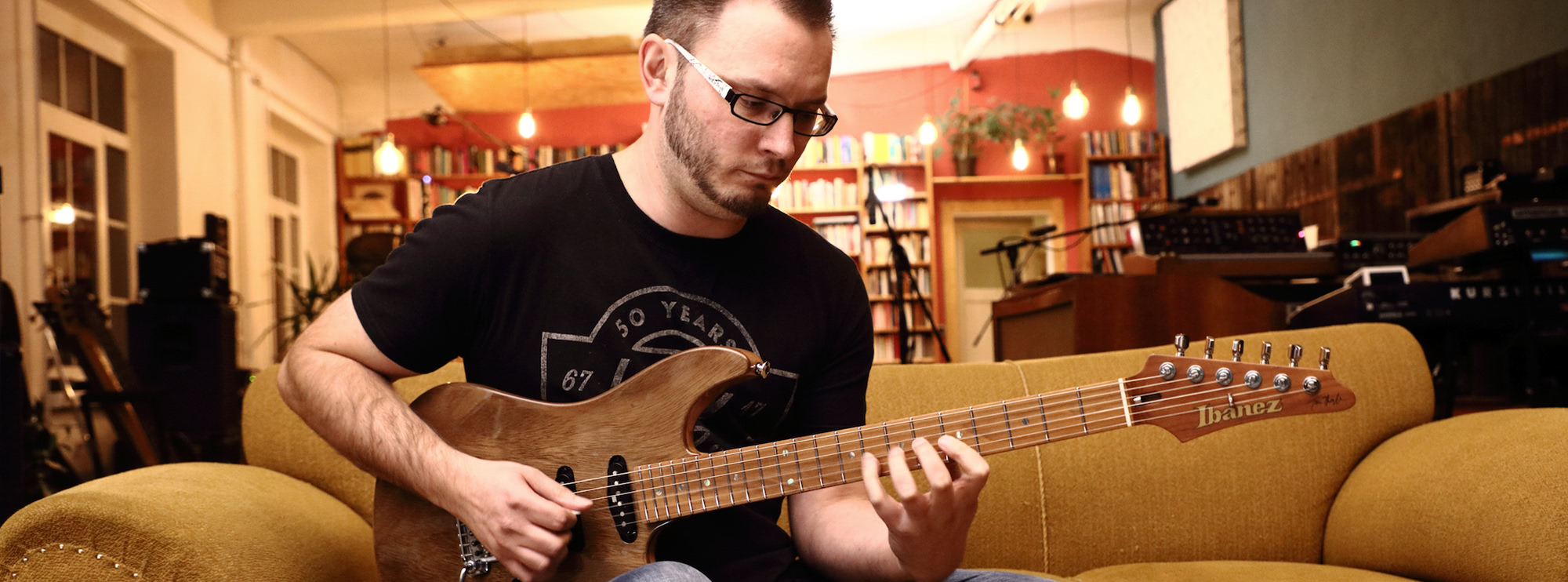Wild Fire Woman by Bad Company
The song "Wild Fire Woman" by Bad Company is a classic example of 1970s rock, filled with rich, bluesy tones, powerful riffs, and energetic solos. If you’re a guitarist looking to expand your playing abilities, learning "Wild Fire Woman" offers a comprehensive opportunity to practice various essential techniques. This note-for-note guitar lesson dissects every riff, chord, and solo, giving you all the tools to play this classic track with the same intensity and precision as the original recording. Danny Gill breaks down this classic track in this exclusive Lick Library video tutorial.
About the Guitarist
The driving force behind Bad Company's guitar work is Mick Ralphs, whose style blends blues influences with hard rock energy. Known for his work with both Bad Company and Mott the Hoople, Ralphs has an innate ability to create melodic yet powerful guitar parts that complement the strong vocal performances and solid rhythm sections of his bands.
Ralphs’ playing in "Wild Fire Woman" is characterised by heavy, bluesy bends, catchy riffs, and searing solos. His influence from blues and rock guitarists of the '60s and '70s, such as Eric Clapton and Jimmy Page, can be heard in his emotive string bending and soulful vibrato. By studying this song, you’re diving into a rich legacy of rock guitar history, learning how to balance technical skill with raw emotion, which was a hallmark of Mick Ralphs’ playing style.
Guitar Techniques Covered in the Lesson
Power Chords and Palm Muting
The rhythm guitar section of "Wild Fire Woman" heavily relies on power chords to create that iconic hard rock sound. Power chords are simple but effective, consisting of just two or three notes, and are often used in rock music to add thickness to the guitar’s sound. The use of palm-muting in conjunction with these power chords helps create dynamic variation by muting the strings, adding percussive emphasis to the song's driving rhythm.
Benefit: Learning to combine power chords with palm muting helps guitarists control the texture of their playing, giving them a powerful tool to craft dynamic, punchy rhythms in their own music.
String Bending and Bluesy Bends
Throughout the solo sections, string bending is a key feature, especially bluesy bends that give the song its emotional, expressive quality. By bending the strings up to a target pitch, you can create a sound that mimics the human voice, a technique often used in blues and rock.
Benefit: Mastering string bends adds emotion and depth to your playing. It also improves your pitch accuracy and strength in your fretting hand, making your solos more impactful.
Vibrato
Vibrato is used extensively in the lead guitar work of "Wild Fire Woman." By slightly bending and releasing the string repeatedly, vibrato adds a singing quality to sustained notes, making them feel more alive and emotional.
Benefit: Developing a strong vibrato is essential for adding personality to your playing, enhancing the sustain and feel of your lead work.
Hammer-ons and Pull-offs
Hammer-ons and pull-offs are both utilised to create fluid, legato lines throughout the song’s faster sections. These techniques allow you to connect notes smoothly without picking every note, adding a rolling, seamless feel to your playing.
Benefit: Hammer-ons and pull-offs are great for building speed and fluidity in your playing. They help develop finger strength and dexterity, enabling you to play more complex passages with less effort.
Slides
Slides between notes are another key feature in the solos, providing a smooth, continuous movement between pitches. This is an essential technique for adding fluidity to your solos and creating a seamless connection between different note groups.
Benefit: Sliding between notes adds a polished, professional sound to your playing, giving your licks and solos a more connected and lyrical quality.
Double Stops
Mick Ralphs uses double stops in the main riffs and solo sections, where two notes are played at the same time. This technique adds harmonic depth to the melody and makes the guitar sound fuller and more resonant.
Benefit: Learning to incorporate double stops into your playing allows you to add harmonic richness to your solos and riffs, making them sound more complex and interesting.
Alternate Picking
The fast-paced solo work in "Wild Fire Woman" incorporates alternate picking, where you alternate between downstrokes and upstrokes. This technique allows for greater speed and accuracy, especially when playing fast, complex passages.
Benefit: Mastering alternate picking is essential for playing fast, cleanly articulated lines. It improves both your precision and control over your picking hand.
Barre Chords
The rhythm sections of the song frequently use barre chords, which require you to press down multiple strings with one finger, forming a chord. This is a fundamental technique for playing full, rich-sounding chords across the neck.
Benefit: Barre chords are an essential skill for guitarists, allowing you to play movable chord shapes anywhere on the fretboard. They increase your finger strength and give you the ability to adapt to different musical keys.
Guitar Techniques Used in This Lesson
- Vibrato
- Alternate Picking
- Power Chords
- Palm Muting
- Hammer-ons
- Pull-offs
- Slides
- Double Stops
- String Bending
- Bluesy Bends
- Barre Chords
By studying "Wild Fire Woman" in this comprehensive guitar lesson, you’ll enhance your skills across a variety of key guitar techniques that will not only help you master this track but also elevate your overall guitar playing ability. Whether you’re a rock guitarist seeking to improve your rhythm playing or a lead guitarist looking for more fluidity and expression in your solos, this lesson is packed with valuable insights and techniques.

About The Tutor
Tutor Profile
Danny Gill
Danny Gill is, without a doubt, the most loved tutor by our community. With an incredible array of DVDs and web lessons for LickLibrary covering a wide variety of topics all of which he covers with incredible detail, it's no wonder he carries as much respect as he does. As...




